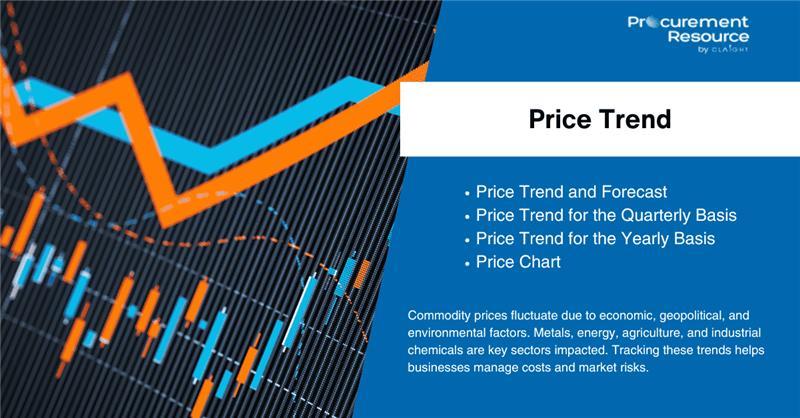Notifications

8 minutes, 21 seconds
-16 Views 0 Comments 0 Likes 0 Reviews

The global demand for industrial gases continues to rise, with oxygen playing a vital role across various sectors including healthcare, metallurgy, water treatment, and chemical manufacturing. As industries evolve and global infrastructure expands, understanding the Oxygen Production Cost becomes increasingly important for procurement teams, investors, manufacturers, and regulatory agencies. This article provides an in-depth exploration of pricing dynamics, market analysis, historical data, and forecasts for oxygen, along with regional insights and procurement strategies.
Oxygen is a crucial industrial and medical gas, and its pricing is influenced by various production methods, regional energy costs, and demand-supply dynamics. The latest oxygen price movements reflect changing market conditions across major economies, influenced by factors such as production scale, energy tariffs, and transport costs.
Industries such as steel manufacturing and hospitals account for the bulk of oxygen consumption. Therefore, any disruptions in these sectors or logistic hurdles can lead to significant price shifts. In recent market updates, the pricing landscape has shown fluctuations due to seasonal demand, energy input costs, and policy-driven interventions in major producing regions.
With increased investments in industrial development and healthcare systems, the oxygen market has seen notable price variability, making cost tracking essential for procurement managers.
Studying historical oxygen price data is key to identifying long-term trends and anticipating future price movements. Historical records provide insight into how oxygen prices have responded to macroeconomic factors, technological developments, and geopolitical shifts.
For instance, the medical oxygen demand spike during global health emergencies offered lessons on market sensitivity and the necessity of production scalability. By analyzing a detailed oxygen cost database, stakeholders can pinpoint past market behaviors, identify seasonal patterns, and create accurate projections.
Oxygen production cost forecasts are developed using econometric models that account for production technologies like cryogenic distillation, Pressure Swing Adsorption (PSA), and other air separation techniques. These forecasts are vital for budgeting, project planning, and procurement negotiations.
A thorough oxygen market analysis reveals the intricate factors that influence production costs and final pricing. The major inputs contributing to oxygen production costs include:
Electricity (a major cost driver in cryogenic processes)
Capital investment in air separation units (ASUs)
Labor and maintenance
Raw air compression and purification systems
The end-use sectors—like healthcare, steel manufacturing, petrochemicals, and aerospace—are instrumental in shaping demand and pricing. Variability in demand from these industries, along with changes in environmental regulations, directly affects the Oxygen Production Cost.
From a procurement perspective, evaluating market behavior and aligning with reliable data providers is crucial. Procurement Resource helps organizations streamline procurement planning through customized cost models and market intelligence tools that are tailored for industry-specific requirements.
The oxygen market exhibits significant regional price differences due to variations in production technologies, energy costs, and market maturity.
North America has a mature oxygen market with a high level of technological adoption in air separation plants. Pricing here is heavily influenced by electricity rates and regional industrial demand.
Europe follows strict regulatory standards and focuses on energy-efficient production methods. The market is shaped by green energy transitions and emission control targets.
Asia-Pacific (APAC) is the fastest-growing region due to rising industrialization and an expanding healthcare infrastructure. Countries like India and China are scaling up oxygen production capacity, often affecting regional and global pricing benchmarks.
Latin America and Africa are witnessing infrastructure expansion in medical and industrial gas applications, prompting investments in localized production units and affecting regional price trends.
These regional insights help buyers and procurement teams to choose optimal sourcing regions and evaluate production economics on a global scale.
The Oxygen Production Cost can vary widely based on the technology used and the scale of production. Large-scale cryogenic units are generally more efficient in terms of cost per cubic meter, while small-scale PSA units are more suitable for local, on-demand applications but may incur higher per-unit costs.
Other cost-influencing variables include:
Capacity utilization rates
Plant age and automation level
Storage and transportation infrastructure
Environmental compliance costs
Access to a detailed oxygen cost breakdown chart enables a clearer understanding of cost drivers. By identifying the major contributors to the production cost, stakeholders can optimize operations and reduce unnecessary overheads.
A robust oxygen price database is indispensable for organizations involved in large-scale industrial procurement. These databases provide historical and current pricing data segmented by region, industry, and production method. Users can leverage this data to build:
Trend analysis models
Cost forecast tools
Production optimization charts
Investment decision-making frameworks
Oxygen price charts, presented through interactive dashboards, offer visual clarity on how prices have evolved over time and help identify critical inflection points that signal market changes. Whether tracking input cost surges or evaluating new procurement sources, these visual tools support faster, data-driven decisions.
Access to granular market insights enables organizations to remain competitive and responsive to market shifts. Key insights for the oxygen market include:
Supply chain bottlenecks and transportation challenges
Regulatory compliance costs and environmental mandates
Innovations in air separation technologies
Growth in end-use industries such as pharmaceuticals and renewable energy
These insights, when paired with actionable intelligence from Procurement Resource, equip businesses with the foresight to avoid supply disruptions, manage price volatility, and align procurement strategies with real-time market conditions.
Through a combination of in-depth data, expert analysis, and strategic tools, organizations can proactively manage their oxygen sourcing operations and minimize risk.
Accessing real-time oxygen prices is essential for making informed procurement and budgeting decisions. Rapid market changes, policy updates, and supply chain disruptions necessitate real-time data access.
https://www.procurementresource.com/production-cost-report-store/oxygen/request-sample
Real-time information empowers procurement professionals to negotiate better, avoid overpayment, and manage supply contracts effectively.
Contact Information
Company Name: Procurement Resource
Contact Person: Ashish Sharma (Sales Representative)
Email: sales@procurementresource.com
Location: 30 North Gould Street, Sheridan, WY 82801, USA
Phone Numbers:
UK: +44 7537171117
USA: +1 307 363 1045
Asia-Pacific (APAC): +91 1203185500
Oxygen Production Cost Oxygen Production Cost and Market Oxygen Production Market Oxygen Production trends Oxygen Production trends market
